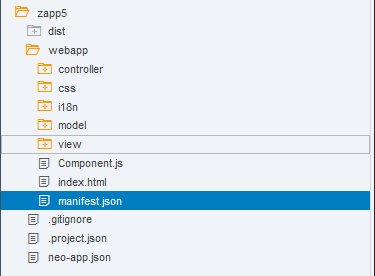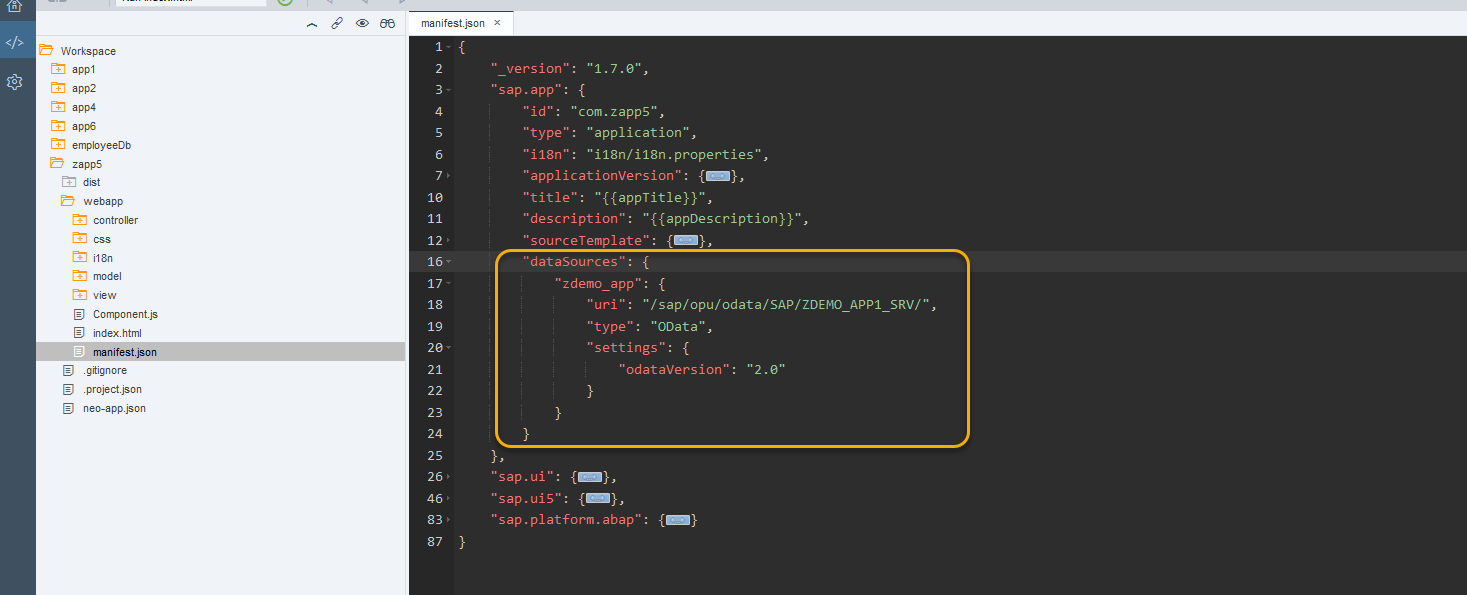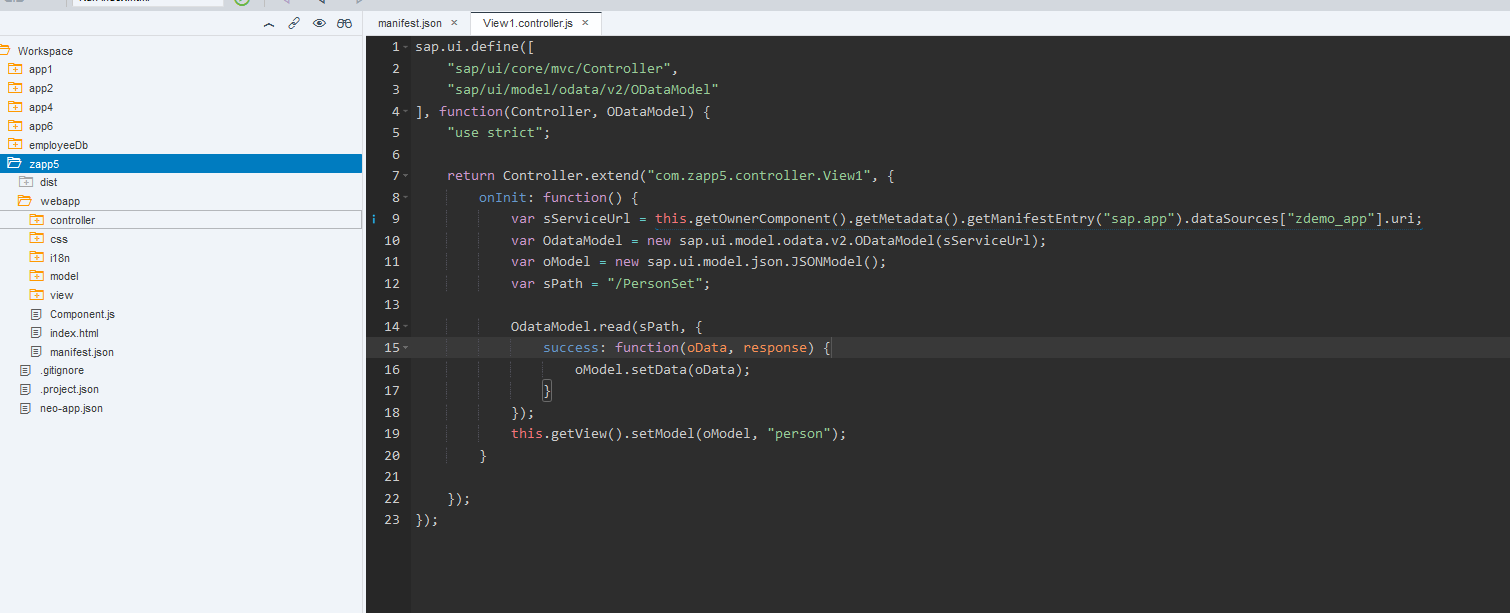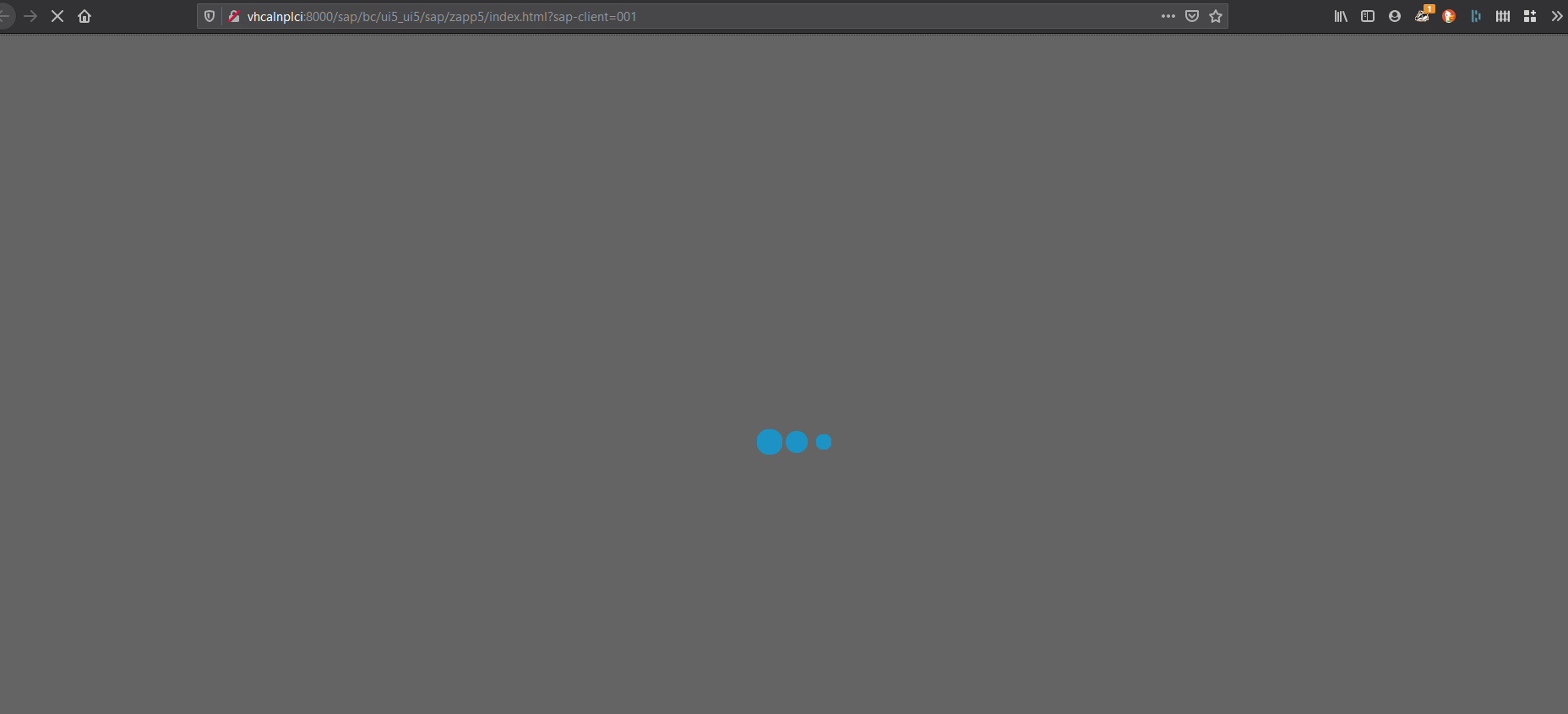Creating a Web Application Using the SAPUI5 Framework (8)
Creating a Web Application Using the SAPUI5 Framework (8)
Continuing the topic from the previous post, I’d like to draw your attention to another way of connecting an OData service to a SAPUI5 application, as well as demonstrate the use of a control that can make the user’s waiting time—while a backend request is being processed—a bit more "interactive", so to speak.
manifest.json
In the SAP WebIDE project structure, there is an inconspicuous file that plays a significant role in configuring how your application operates. This file is called manifest.json.
See: Descriptor for Applications, Components, and Libraries

To define the path to the OData service you want to call, you need to specify the dataSources attribute under the sap.ui namespace:

"dataSources": {
"zdemo_app": {
"uri": "/sap/opu/odata/SAP/ZDEMO_APP1_SRV/",
"type": "OData",
"settings": {
"odataVersion": "2.0"
}
}
}
Reading manifest.json from the Controller
Controller source code to read the required attribute from manifest.json:
onInit: function() {
var sServiceUrl = this.getOwnerComponent().getMetadata().getManifestEntry("sap.app").dataSources["zdemo_app"].uri;
var OdataModel = new sap.ui.model.odata.v2.ODataModel(sServiceUrl);
var oModel = new sap.ui.model.json.JSONModel();
var sPath = "/PersonSet";
OdataModel.read(sPath, {
success: function(oData, response) {
oModel.setData(oData);
}
});
this.getView().setModel(oModel, "person");
}
See: getOwnerComponent

Deploy, run.
BusyDialog
You can enhance the user experience during OData service loading by using the BusyDialog element to visualize the wait time.
Updated controller source code:
onInit:function (){
this._oBusyDialog = new sap.ui.core.BusyIndicator.show(0);
var sServiceUrl = this.getOwnerComponent().getMetadata().getManifestEntry("sap.app").dataSources["zdemo_app"].uri;
var OdataModel = new sap.ui.model.odata.v2.ODataModel(sServiceUrl);
var oModel = new sap.ui.model.json.JSONModel();
var sPath = "/PersonSet";
OdataModel.read(sPath, {
success: function(oData, response) {
if (this._oBusyDialog) {
sap.ui.core.BusyIndicator.hide();
}
oModel.setData(oData);
}.bind(this)
});
this.getView().setModel(oModel, "person");
}
Deploy, run.
At the moment the data is being loaded, a so-called "busy" indicator will appear.
